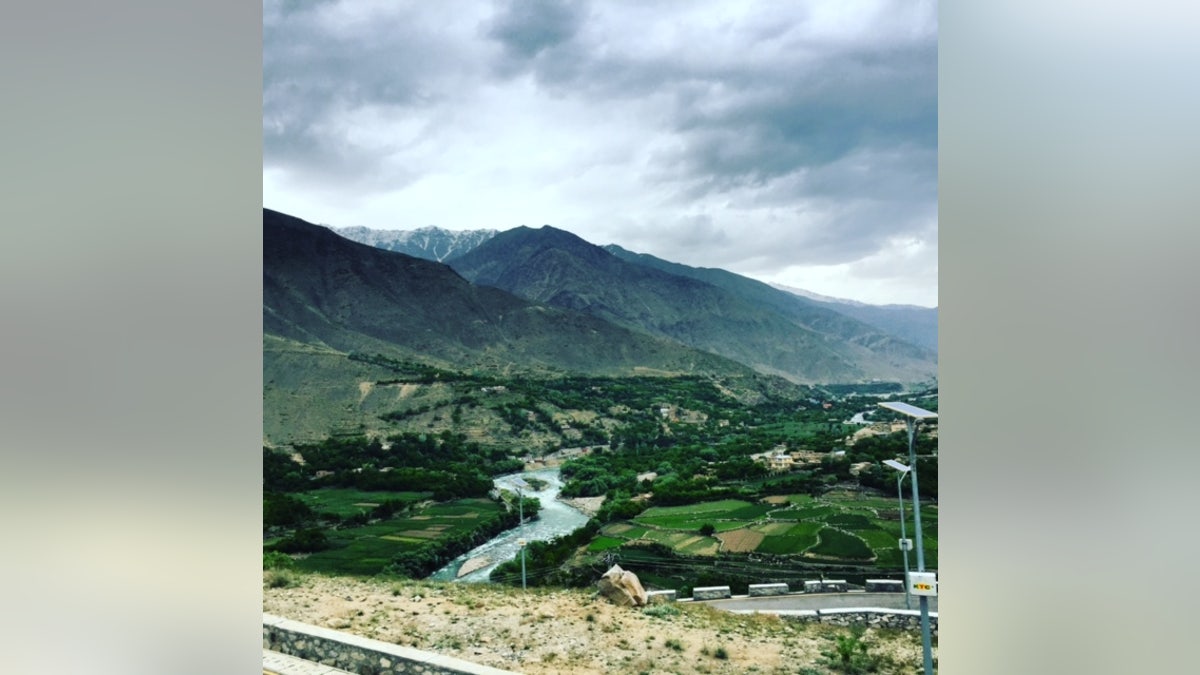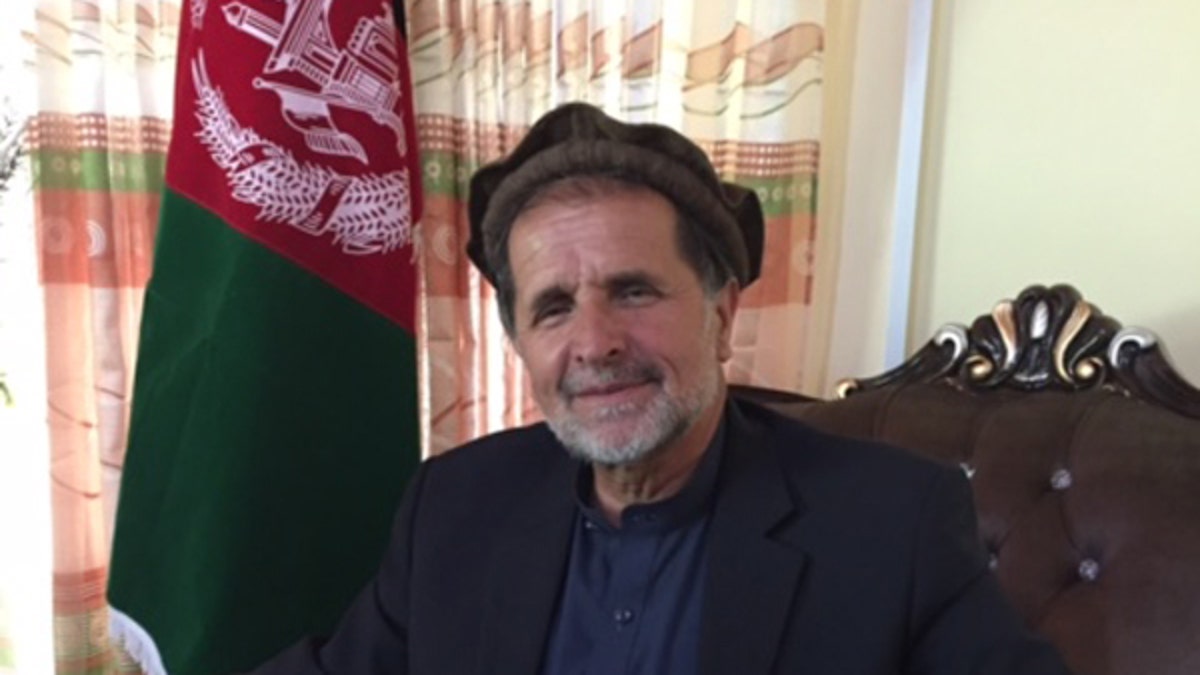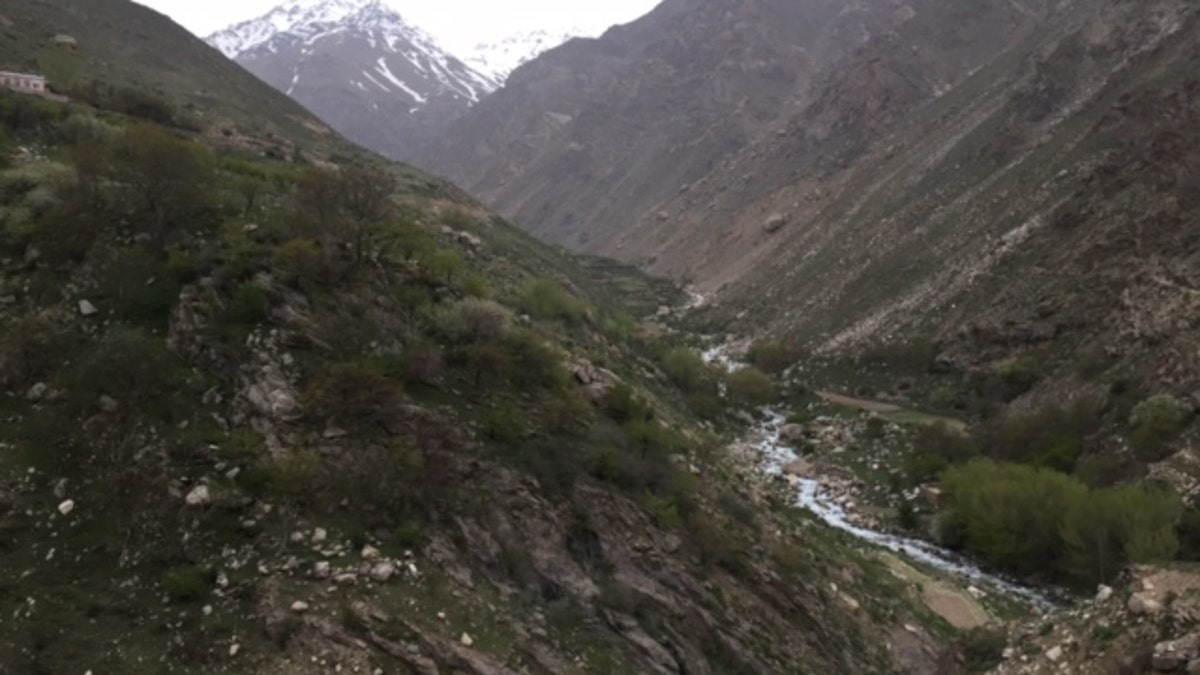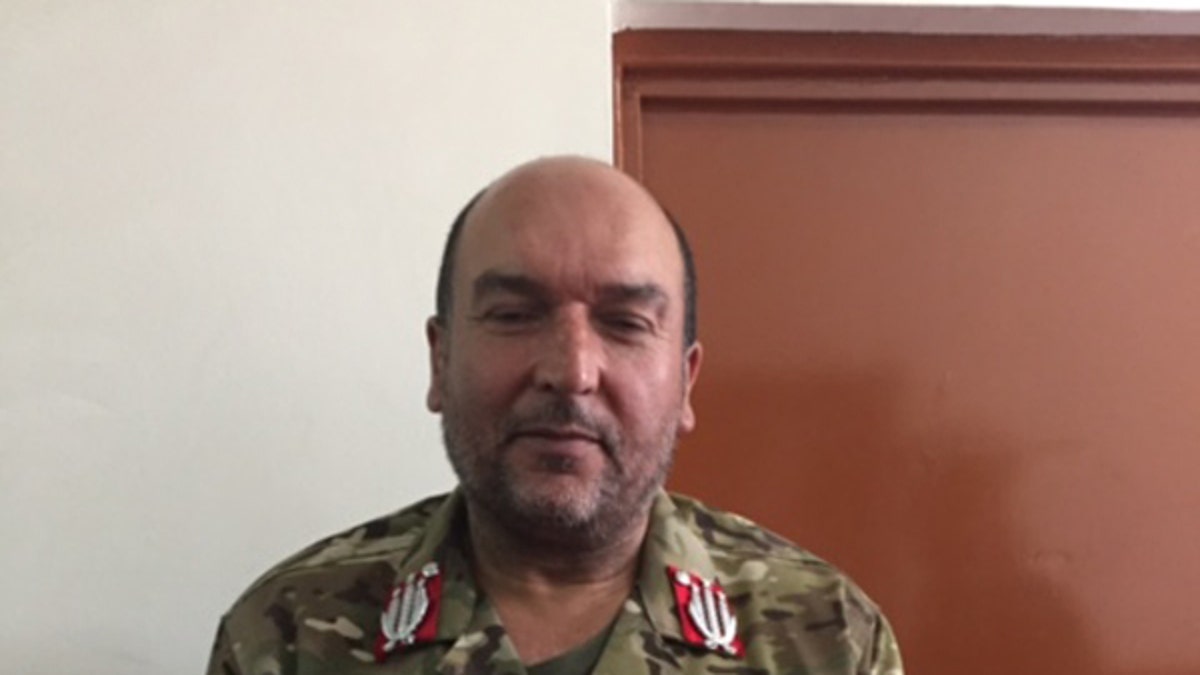PANJSHIR VALLEY, Afghanistan -- It has been dubbed Afghanistan's Green Zone: A pocket of paradise amid the bloody, conflict-ravaged country -- both a hidden gem and full of gems. Specifically, they are world-class emeralds seemingly just waiting to be mined.
Located some 80 miles along a snaking road northeast of Kabul via Bagram, the Panjshir Valley boasts stark mountainous terrain at the foot of the historic Hindu Kush range. Deep in these mountains, hopeful civilians with their home-crafted explosives attempt to blast their way into some money.
"The villagers are mining like they were centuries ago, no technology. Sometimes they get lucky, sometimes not. Sometimes they destroy the emeralds in the process," Haji M.Gul Rashid, president of the Gem Stone Union in Afghanistan, told Fox News. "People are very poor, they just want to work to feed their families. They don't have many possibilities beyond that."

Afghanistan's lush Panjshir Valley (Hollie McKay/Fox News)
Geological surveys conducted in Afghanistan during the early years of Operation Enduring Freedom estimated that the country’s natural mineral wealth could exceed a trillion dollars, with a major portion of the untapped minerals buried below Panjshir alone. Beyond emeralds, Rashid says that Panjshir boasts "all colors and all stones," but they have received next to no help amassing their potential fortune.
Some of Earth’s earliest indications of mining -- dating back about 6,000 years -- have been traced to Afghanistan. Yet the passage of time has afforded the Afghan people little progress in this realm. What locals want is long-term support with mining methods and technology to elevate production.
"About three years ago a program came from the international community for six months, but it was not effective. It was supposed to train specialists, but that does not take six months. That takes years," Rashid said. "There is so much treasure here, but still there is no response."

Emeralds from the Panjshir Valley (Hollie McKay/Fox News)
The same can be said for an area in the southeast of Afghanistan where one of the world’s largest and most easily mined deposits of rare-earth elements -- critical in the manufacture of modern technology -- remains virtually untapped.
Indeed, the instability of Afghanistan as a whole -- despite Panjshir's relative stability -- has proven to be a major deterrent for cautious investors.
Experts say that these natural treasures have the capacity to bring much-needed wealth to Afghanistan, and give Afghans in other provinces a means of income that doesn't rely on cultivating poppy seeds or cannabis to survive. Income from the narcotic trade funds the Taliban and contributes significantly to the global opioid and heroin epidemic.

Panjshir Gov. Kamalluddin Nizami (Hollie McKay/Fox News)
"Mining would bring many, many benefits for our country and for investors," Panjshir Gov. Kamalluddin Nizami noted. "But we can't do this alone. Coordination with the private sector is imperative."
As it stands, most recovered gems are usually smuggled uncut out of the country to places like Dubai and India, due to heavy Afghan regulations and taxation -- meaning little revenue or employment opportunity for Afghans. But until the infamous corruption in the country is cleaned up and proper mining mechanisms are put in place to support the potential billion-dollar a year industry, those in the business say they have little choice but to go it alone.
While there is a scattering of arbiters that dominate the trade, most village miners -- if they are lucky - make $50 to $100 a month. The central government's Ministry of Mines and Petroleum recently revised its Minerals Law and the Law on Hydrocarbons, but such revisions are still awaiting parliamentary approval and locals remain uncertain if and how it will benefit them.

Afghanistan's mountainous Panjshir Valley (Hollie McKay/Fox News)
And even though Panjshir serves as a getaway for folks seeking serenity from the fighting and tension that permeates most other provinces, locals say it could have a broader visitor appeal -- one that could bring jobs and steady income to the impoverished people.
It is indeed a quaint and picturesque place reminiscent of a time long ago -- steep hills and V-shaped side valleys, sprinkled with mud huts and small farms, where farmers grow wheat and herd sheep and goats. Cows often roam freely. Visitors can see families flying kites and sharing picnics by the water, donkey carts tottering along the narrow dirt tracks, and wild fruits and herbs flourishing at every turn. The diet in Panjshir is predominantly barbequed meat with some vegetables and rice, and flatbread at every meal. Panjshiris constantly offer guests hot tea “chai” along with generous platters of dried local mulberries, walnuts and dried chickpeas. Every house seems to be flanked by mulberry, apple and stone fruit trees.
According to Panjshir Province Police Chief Mohammad Ishaq Tamken, their biggest security concern is in the form of smugglers using Panjshir as a route to transport illegal weapons from Pakistan and northern provinces through to Kabul, a practice they are endeavoring to combat.

Panjshir Province Police Chief Mohammad Ishaq Tamken (Hollie McKay/Fox News)
"This is a great place for visitors, but nobody has built up anything here," Tamken told Fox News.
Most of the province is without electricity or hot water. Those fortunate enough to afford fuel might use a generator for a few hours a day. Remarkably, 3G cell service recently became available to some parts of the valley, which was a boon to the local population since Facebook is a common communications tool for Afghans.
Yet without further support in terms of infrastructure, Panjshir’s economic potential remains buried with its emeralds. Locals point out millions that the international community spent not long after 9/11 on setting up wind turbines for electricity. But at some point, the money ran out, the project was left incomplete and now it would require starting from square one. There is some run-of-river, micro-hydro-power for a few villages and individual houses. But the larger hydro-power station in Paranday village remains unfinished. So much of Afghanistan seems unfinished like that -- the last 10 percent to 25 percent of projects just too insurmountable for a variety of reasons.
The Panjshir Valley was the site of heavy fighting during the Soviet invasion after 1979. It was in the Panjshir that the famed Ahmad Shah Massoud, the “Lion of the Panjshir,” started the resistance that the Russians and Afghan Communist regime were unable to defeat, despite leveling practically every structure in the valley, denuding it of trees and killing many of its inhabitants. Testament to this fighting can been seen in the many bombed-out shells of Soviet tanks and armored vehicles littering the valley floor.
On a hike in the local hills, it’s common to come across rockets, mortar tails and bullet casings still rusting in the sunshine from their original place of destruction. Yet it is for this reason, Panjshiris vow, that their enclave has since been mostly untouched by terrorists and combat, even throughout the U.S-led war against Al Qaeda and their Taliban hosts.
"After fighting the Russians, all the people here built a united community when others were fighting among themselves," Gov. Nizami explained.
The region is inhabited almost solely by ethnic Tajiks who remain loyal to their deceased but still esteemed Mujahedeen leader, Ahmad Shah Massoud. After being a major force in the Soviet resistance, he went on to lead the resistance against the Taliban and other affiliated groups in the 1990s. The Panjshir was the last holdout against radical Islamic extremism in the country until the U.S. invaded in 2001.

Wall hanging of the esteemed Ahmad Shah Massoud, the “Lion of the Panjshir." (Hollie McKay/Fox News)
Posters of Massoud adorn many huts and streets, and his tomb, nestled high on a quiet mountain top, serves as a sanctuary where, every day, devotees come to pray and pay tribute. He was assassinated by Al Qaeda affiliates two days before 9/11, in what many see as Osama bin Laden’s final attempt to deny Afghans a modern future.
In due course, locals speak with pride of the code-named "Jawbreaker" mission -- the first CIA teams to enter Afghanistan in the immediate aftermath of those attacks. The Gary Berntsen-led team set its base in the staunchly anti-Taliban Panjshir and brought together an alliance to topple the terrorist regime from the North.
Panjshiris also fondly recall a brief period in which a U.S. Provisional Reconstruction Team came in more than a decade ago and helped them pave their main road and build schools and a bridge. Yet compared to many other parts of the country, resources are vastly lacking.
"We are people sitting on riches and living in quiet peace. We welcomed NATO as our friends, but we feel like we have been forgotten," lamented Haji Abdul Sami, an employee with the Ministry of Defense. "We are not criminals here. Unfortunately, the areas where the criminals are seem to get all the resources and attention."
